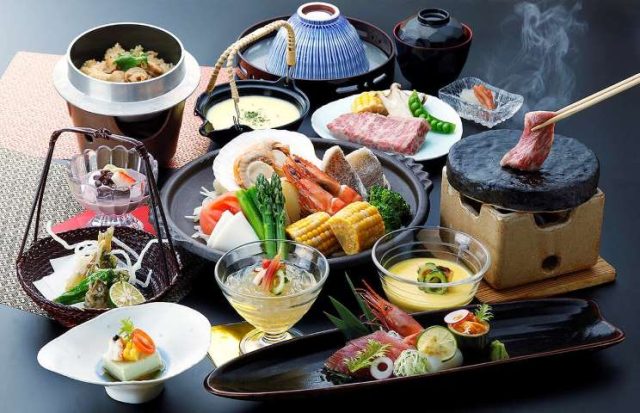
As the home of sushi, sake, wagyu beef, ramen noodles, udon and tempura, exploring Japan’s culinary offerings is a must-do for even the most casually interested visitor to the country. The obvious place to start is at the dining table: from a traditional breakfast of rice, fish and miso soup, through to a reservation at one of Japan’s 414 Michelin-starred restaurants, every meal offers the opportunity to learn more about what makes the country one of the top gastronomic tourism destinations in the world.
But there’s so much more to Japan’s culinary tourism offerings than formal restaurant meals! The country’s dizzying array of street food specialties and more casual options pepper every street corner and alley. While you’ll find ramen shops and stalls across Japan, each region has its own take on the dish—from Sapporo’s addition of miso and butter, to Kasaoka’s chicken-based version. Or dig into a plate of okonomiyaki, a savoury pancake made with shredded cabbage and topped with sauces and protein. Kansai-style is the classic, but you’ll also find Hiroshima-style okonomiyaki with a crispy noodle layer. Yakitori (grilled chicken skewers) are also found everywhere and can serve as anything from a light snack with a beer through to a full meal. And if you’re looking for something sweet, grab a stick of dango – sweet, chewy rice flour dumplings, skewered and topped with sauces.
For those interested in Japan’s unique and abundant ingredients, a visit to a local market is a must. A few years ago, Tokyo’s historic Tsukiji fish market moved to a new home in Tokyo Bay. The new Toyosu Market is the largest fish market in the world, and visitors can watch the famous tuna auctions, enjoy super-fresh sushi at one of the on-site restaurants, or browse the fruit and vegetables at the adjoining produce market. While the main fish market has moved, the original Tsukiji location is still home to an “outer market” with food vendors, kitchenware stalls, and some of the best restaurants in the city. In Osaka, explore the long, traditional-style Kuromon Market, named for the kuromon (black gate) of the nearby Emmeiji Temple. The 400-year-old Nishiki Market in Kyoto is a must-visit for culinary tourists, with 130 vendors packed into the narrow space, offering everything from fresh fish to pickles, rice crackers and tea.
Once familiar with Japan’s ingredients, the next step is a more “hands-on” culinary adventure. A cooking class allows visitors to bring home the flavours of Japan to share with friends and family. A sushi-making class is not only an introduction to preparation techniques and local culture, but may also include a tea ceremony before sitting down to enjoy what the class has prepared. Other options include learning to prepare vegetarian Japanese specialties, a class to make delicate wagashi sweets, or even making soba noodles by hand. Tour a whisky distillery, do a beer tasting, or take a private sake lesson in a hidden bar. In Japan, the diverse array of culinary adventures offer a captivating taste of the culture.
To learn more about Japan’s rich gastronomic culture, dining options, and culinary tourism, visit JNTO’s Gastronomy page.





